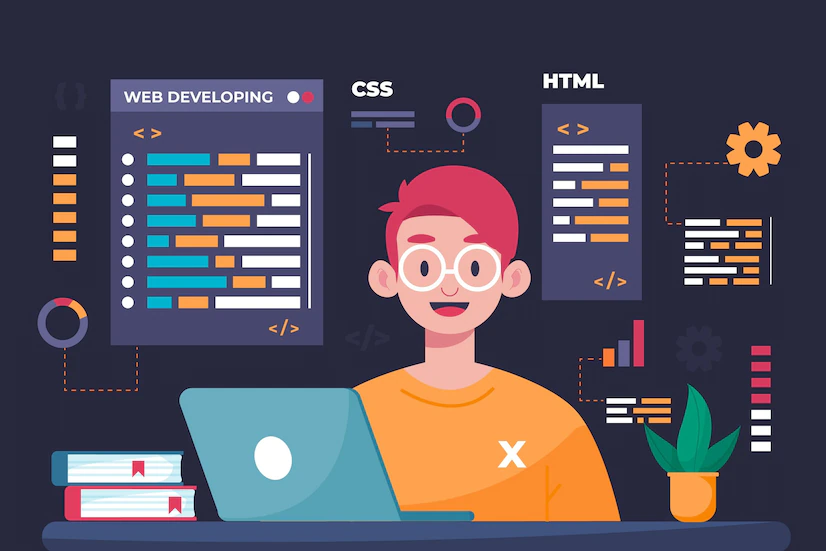Top Languages for the Full Stack Developers in 2023
- 1 8 best Languages for the Full Stack Developers
- 1.1 JavaScript
- 1.2 Python
- 1.3 Ruby
- 1.4 PHP
- 1.5 CSS
- 1.6 HTML
- 1.7 C#
- 1.8 TypeScript
- 2 Conclusion
As technology evolves and businesses become more interconnected, having a wide range of skills will become integral for success. With software developer jobs increasing by 22% annually, staying ahead of the curve is crucial for keeping your skillset relevant and in demand as a full-stack developer.
But with so many programming languages to choose from, it can be challenging to know which ones to focus on.
To help you stay ahead, we’ve rounded up some top languages that every full-stack developer should know in 2023. These languages represent the future of web development and are essential for building modern, scalable, and secure web applications.
So, without further ado, let’s dive in!
8 best Languages for the Full Stack Developers
Here are the top languages for full-stack developers that you should master and start building your skill set immediately.
JavaScript
In 2023, experts agree that JavaScript will be one of the most critical languages for full-stack developers. JavaScript is known for its easy-to-read syntax. It is versatile, with a wide range of libraries and frameworks, such as React, Angular, and Vue.js, making it easy to build fast, responsive, and interactive user interfaces.
It’s also a well-rounded language that allows developers to create server-side and client-side applications easily. These advantages make JavaScript popular for everything from websites to mobile apps. Essentially, anywhere code needs to run in a browser environment.
Of course, there are some drawbacks as well; JavaScript can be slow compared to other languages, such as Java or C#, and its asynchronous complexity can cause headaches for beginners.
With careful consideration, though, learning this language will pay dividends by 2023.
Python
In 2023, Python remains one of the top languages for full-stack developers as it is a flexible and versatile language that can be used for both front-end and back-end web development. It has a straightforward syntax structure widely popular due to its multi-faceted capabilities. It supports many internet protocols such as HTML, XML, JSON, etc.
On the downside, however, its large code base means heavier load times that some developers may prefer to avoid.
Ruby
With its straightforward syntax and immense capacity to handle complicated applications, Ruby makes it easier than ever to create powerful apps in a fraction of the time compared to other languages. Furthermore, the robust third-party library support offers developers further confidence when tackling complex projects or bugs.
Nevertheless, while helpful, Ruby also has some drawbacks: it’s relatively slow, and memory usage can become intensive as the code scale grows.
PHP
Thanks to its versatility and flexibility, PHP remains a significant language in web application development. As expected, full-stack developers in 2023 will need to equip themselves with PHP skills to meet customer demands.
The language is relatively easy to learn, given its simplicity and limited syntax, making it an attractive option for newer coders. Additionally, it allows back-end developers to rapidly develop prototypes and get them up and running, reducing costly development time.
On the other hand, like any language, PHP has its challenges; maintenance can be tricky if large-scale projects are not well documented, which increases cost, especially when multiple developers are involved.
Despite these issues, PHP shares the stage with JavaScript as one of the top languages for full-stack developers in 2023.
CSS
CSS will remain one of the most popular languages for full-stack developers. It’s a sass-based stylesheet language that expresses a document’s look and form.
Its advantages include being easy to use, having a shorter development time than other web technologies (like JavaScript or HTML), and being highly compatible with devices, browsers, and user agents.
Its primary disadvantage is its lack of flexibility, which can lead to problems when dealing with large projects.
Developers need to be knowledgeable to use it effectively and efficiently. CSS is an invaluable tool for web design and full-stack development due to its ease of use, fast development time, and compatibility across multiple systems.
HTML
HTML still holds a special place in the hearts of full-stack developers – it remains one of the most reliable and versatile solutions, providing developers with various options to develop web applications. HTML allows developers to build solid foundations for stunningly presented, user-friendly websites.
Despite its strengths, however, there are downsides too – while it is relatively easy to start with HTML, creating more complex pages requires more attention from developers and can be time-consuming.
Developers must balance their needs and resources with HTML’s capabilities to incorporate them into their projects in 2023.
C#
C# is a programming language for building Windows desktop and mobile applications. The language is known for its simplicity, readability, and versatility, making it an excellent choice for creating modern and scalable applications. C# is also well-supported by Microsoft, with a large community of developers and a wealth of resources.
TypeScript
TypeScript is a statically typed superset of JavaScript that makes it easy to build large and complex web applications. The language is known for its strong typing and type inference, which makes it easier to catch errors before you run your code. TypeScript is also well-supported by Microsoft, with a large community of developers and a wealth of resources.
Conclusion
As the technology sector rapidly advances, developers need to stay ahead of the curve by learning new programming languages. Java and JavaScript will continue to be in the lead as far as full-stack development is concerned.
However, there are several languages that developers should learn to stay ahead of the curve. The IT courses in Abu Dhabi are the best way to get prepared with their Full Stack Development Training.
The languages on this list are predicted to be in high demand over the next few years, so start studying and prepare to add them to your skillset.


















